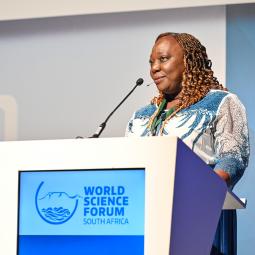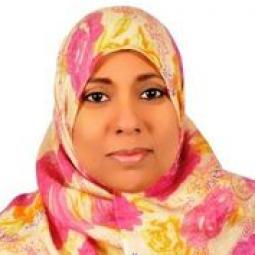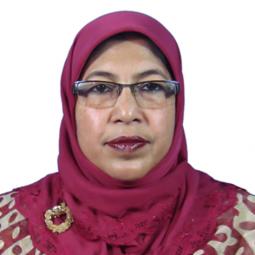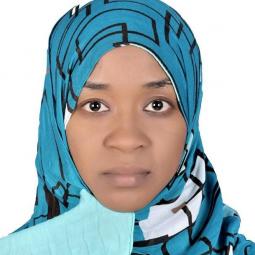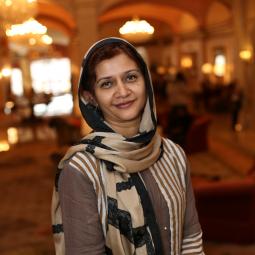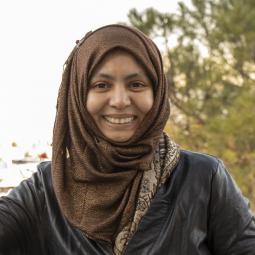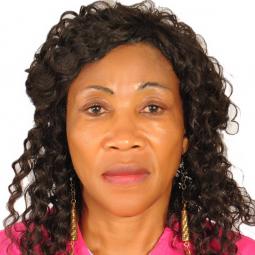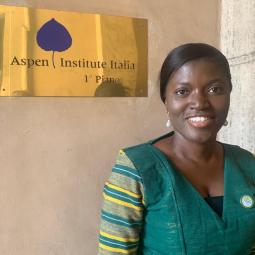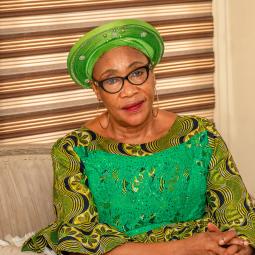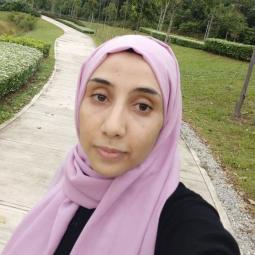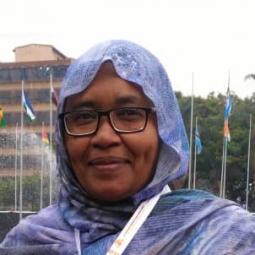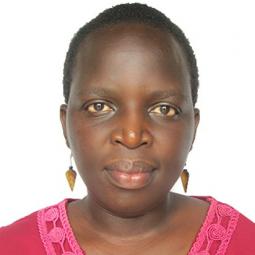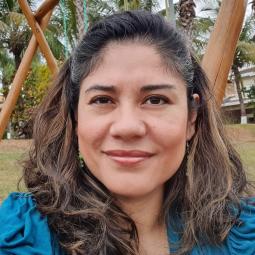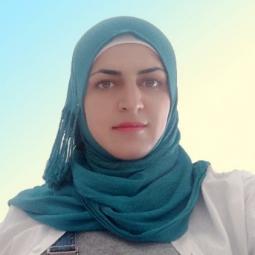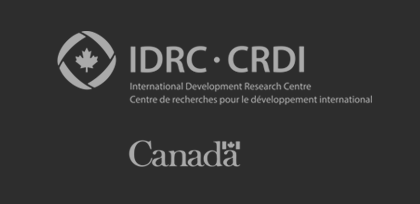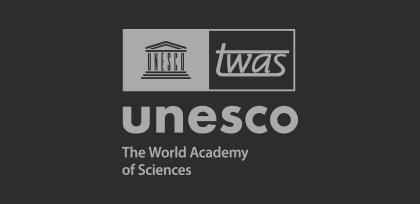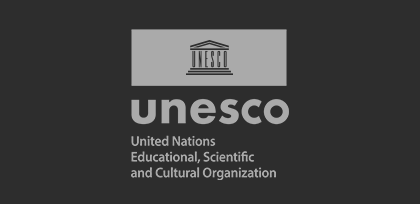OWSD Nigeria National Chapter Presents "The Ornamental Fishery Sector and its Value-Chain: A Vital Sector for Economic Development in Nigeria "
October 21, 2020
Fifteenth edition of the OWSD Nigeria National Chapter University of Port Harcourt Branch series of scientific communications: Adaba Tonye Ibim on Ornamental Fishery Sector and its Value
The Ornamental Fishery Sector and its Value-Chain: A Vital Sector for Economic Development in Nigeria
By
Adaba Tonye Ibim, PhD
However, Ornamental Fishery involves the capture/breeding, keeping, display/sales attractive,
- live, fishes for their shapes (Jellyfish), colours (Goldfish), movement (Knife fishes), feeding pattern (Octopus), social character (Dolphins) size (Whales), among others (Ibim and Gogo, 2019).
- dead parts of fishes for their abstract beauty (endo- and exoskeletons)
- products derived from live and dead fish and fish parts such as shell decorated flower vases, picture frames, and Aquaria (Ibim, 2019).
Places where Ornamental Fishery Products are found or placed
- Offices, Homes, Laboratories - Aquarium tanks (table top tanks, homestead tanks).
- Malls – Public aquarium (Dubai mall, Dubai aquarium]
- Aquarium ponds (Rotterdam, Netherlands)
- Museums (Singapore Museum and Park). Here dead parts of fishes are kept and displayed due to their abstract beauty (fish skeleton and preserved fishes), beautiful external structures they possess (exoskeletons or shells of fishes and seafoods), or even products that can be derived from them.
- Parks (aquarium parks) live, fin or non fin fishes, and dead parts of fishes such as fish skeletal structures (endo- and exoskeletons or shells of fishes and seafoods), and products derived from them.
Plate 1 Plate 2 Plate 3 Plate 4 Plate 5
Plate 6 Plate 7 Plate 8
Plates 1 to 8: Different types of Ornamental Products (Plates 1.Homestead tank, 2. Wall Art Work, 3. Table Art Decoration, 4. Ornamental Art Gallery Products, 5. Centre Table Aquarium, 6. Public Aquarium, 7. Homestead Aquarium, 8. Table top Aquarium)
What’s the Importance of Ornamental Fishery?
The Ornamental Fishery is a source of;
- Foreign exchange and therefore increases the GDP of the nations/governments involved in it. Such countries are Singapore (where it is the primary export product), Malaysia, Indonesia, America, and Europe. In Africa, South Africa is the main country where it is practiced.
- Wealth creation: It is an area for entrepreneurial development. Several people involved in the different parts of the Ornamental Aquarium fisheries Business value--chain, especially the breeding, sales and keeping (hobbyist), make high incomes from this business. Especially from the fishes as a particular fish species for Aquarium use can fetch more money as compared to when sold for food where it will cost less. For instance, The same species of fish which cost N200 for food, can go for N1000 as an Aquarium fish. Secondly, waste/dead parts of aquatic organisms are not wasted, rather they can be re-constructed or added to some other products by Artists or Industrialists into all kinds of Artefacts, or preserved by Curators, into all kinds of Relics..
- Job creation: The value chain of this fishery is very wide and is capable if properly exploited, to provide a wide range of jobs. In Singapore where it is the main source of employment for the country, all areas The value chain are thoroughly exploited. This can be the situation in Nigeria.
- Ecotourism/Entertainment: Ornamental species can be viewed for the purpose of entertainment, in their natural environment without disturbing or changing their natural ecosystem. This is found in Rotterdam in the Netherlands. It also, improves man’s relationship with the aquatic organisms. This helps to prevent man from destructive extraction of the aquatic organisms when you get to appreciate them.
- Aesthetics: The products of the Ornamental Fishery as the name implies, such as the fishes, Aquariums, or others, are used to add beauty and colour to several places such as offices, residential houses or public places. This also improves the value of the places concerned. Example of such places are the Dubai Mall, in Dubai and the White Whale Park in South Africa
- Biodiversity Conservation: the Ornamental Fishery systems have been used for Biodiversity conservation in areas where certain aquatic species are being threatened. It has the advantage of conserving biodiversity if the organisms are retained in the ornamental fisheries facilities, as seen in Abudabi, Nature Park, in the United Arab Emirate (UAE), or in the Finima Nature Park, Bonny Island, Rivers State, Nigeria.
- Research and Development/ Education: The Ornamental Fishery systems/facilities are used for Research and Development purposes in most developed countries by researchers, in education development as seen in National Geographic Television Channel. It enhances research and development an even further educative studies of species of special interest as the species could be retained in the environments that mimic their natural environments. Also, dead parts or preserved parts of aquatic organisms are made available in Museums to add to man’s knowledge on different species, present or in the past.
- Therapy/health Purposes: this system has been used by several researchers to control or treat several conditions among people of various ages. These researches showed that;
- Children that were hyperactive were calmed
- Attention span of persons of various ages were improved
- Hypertensive adults blood pressure were managed downwards
- Old, senile patients recorded improved memory and stability
- The patience level of public office visitors were improved). (Olasoebikan et al., 2011)
The Ornamental Fishery Value chain
The Ornamental Fishery though a science, has an artistic appeal (Olasoebikan et al., 2011), and an entrepreneurial edge. It is a very vast and lucrative study with a wide and interconnecting value chain (Ibim, 2016). The Ornamental Fishery Value chain, is simply put, the chain of business ventures that emanate from the sector. The value chain include but not limited to, Aquarium fish seed and broodfish sourcing for sales, aquaculture propagation of seed and broodfish for sales, aquarium fish live and dry feeds development for sales, aquarium accessories production, aquarium equipment production, drugs and chemicals production, aquarium construction, aquarium parks and gardens design development and management, aquarium maintenance, aquarium consultant, aquarium veterinary services, Aquascape artists, Museum Curators services, Ornamental fish art production, Ornamental fishery research and development, etc. This value-chain in Nigeria is very much untapped and so investment into it can translate into a series of very lucrative businesses (Ibim, 2016).
The most commonly exploited part of the value chain in Nigeria is the Ornamental/Aquarium fish sales. However, the fishes sold are mostly exotic species imported, bred and sold. (Ibim, 2016). Meanwhile, several indigenous species have been found in Nigeria waters. Some of the ornamental fishes commonly found in Nigeria are; Pelvicachroms pulcher – Nigerian red, Panthodon bucholzi – Butterfly fish, Ctenopoma kingsleyae – Tailspot Ctempoma, Xenomystus nigri - Knife fish, Papyrochranus afer – Feather back, Cyanoglosus senegalensis – Tongue Sole, Daisyatis margarita - Sting Ray, Hemichromis fasciatus – Banded Jewel fish, Epertochythyis calabaricus – Rope fish, Malapterurus electricus – Electric fish, Parachana obscura - Snakehead, Hydrocyanus forskahli – Tigerfish, Gobius niger – Black goby, Peripthalmus barbus – Mudskipper, Tetradon species – Puffer fish, Alectis indicus – Thread fin, Trichiurus lepaturus – Cutlass fish, Drepane longimanus – African sickle fish, Gnathonemus petersii – Peter’s Elephant Nose fish, Polycentropis abbreviata – African Leaf fish, Brycinus longipinnis – African Long Finned Tetra (Ibim and Uedeme – Naa, 2011; Olasoebikan et al., 2011; Ibim and Francis, 2012; Ibim, 2019; Ibim and Eziefule, 2019; Ibim, et al., 2019; Ibim and Gogo, 2019; Ibim and Ike, 2019). Though these exist, they are not exploited adequately, but are sourced and smuggled off abroad for little or nothing for the fishers and the country.
Plate 1 Plate 2 Plate 3 Plate 4 Plate 5 Plate 6
Plates 1 to 6: Examples of Indigenous Ornamental fishes (Plates 1. Panthodon bucholzi – Butterfly fish, 2. Pelvicachromis pulcher – Nigerian red, 3. Gnathonemus petersii – Peter’s Elephant Nose fish, 4. Hemichromis fasciatus - Gold tilapia or branded Jewel fish, 5. Polycentropis abbreviata – African Leaf fish, and 6. African Killifish)
However, this value chain is an area that requires persons that are passionate, with special scientific, artistic knowledge, entrepreneurial touch, and inventive and innovative skills to excel. Women have been severally known to be highly scientific, artistic and enterprising, and are commonly associated with the above named characteristics capable of turning the fortunes of this sector around. Their involvement therefore is key in growing this sector.
Conclusion and Recommendation
The Ornamental Fishery value chain of businesses, is a relatively untapped but vast area. Also, the local Ornamental fish species are numerous and not exploited adequately. However, they are sourced and smuggled off abroad for little or nothing for the fishers and the country.
Appropriate exploitation of the value chain especially the local fish species breeding, culture and sales is required. This cannot be over emphasized to acquire the full benefits of this sector, and enhance the development of the stakeholders in particular, and Nigeria at large.
As the passion and skills required to turn this sector around are commonly found in the female gender, women in Aquatic sciences are therefore encouraged to explore this special area and give it their special touch to further bless the society.
References
Ibim, A. T. (2019). Fundulopanchax species - A Potential Aquarium Fish in Nigeria: The Biology, Prospects and Challenges. Tropical Freshwater Biology, 28 (2): 159-169.
Ibim, A. T. (2019). Preliminary Investigation of the Distribution, Biology and Economic Importance of A Nigerian Aquarium Fish, Ctenopoma kingsleyae (Gunther,1896). International Journal of Agriculture and Rural Development (IJRD), 22, (2): 4350 -4355.

